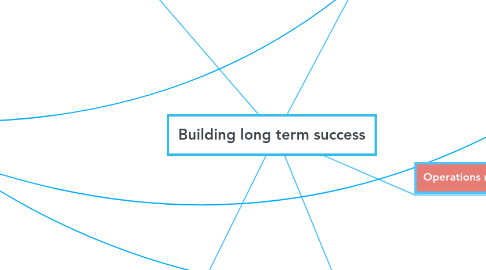
1. Human Resources
1.1. Employment relations
1.1.1. Gender pay gap
1.1.2. Empowerment
1.1.3. Flexibility
1.1.3.1. Flexitime
1.1.3.2. Work from home
1.1.3.2.1. Cost effective
1.1.3.3. Self employed
1.1.4. Work life balance
1.2. Value player (Bloom, n.d., 3.2)
1.2.1. Identify/exploit value
1.3. Stakeholders (Bloom, n.d., 3.2)
1.3.1. Client/Consumer
1.3.2. Employee
1.3.3. Government
1.3.4. Supplier
1.3.5. Investor/lender
1.4. Political astuteness
1.4.1. Valuing people
1.4.2. Thinking strategically
1.5. Change management
1.5.1. Innovation
1.5.2. Resistance to change
1.5.2.1. Kotter's 8 steps
1.5.3. Creating sustainable transformation
1.5.3.1. Motivate
1.5.3.2. Persuade
2. Operations management
2.1. Technology
2.1.1. Innovation
2.2. Quality
2.2.1. Quality gaps model (Parasuraman et al 1985)
2.2.2. Managing quality
2.2.2.1. Correct employment
2.2.2.2. Quality control (QC)
2.2.2.3. Quality assurance (QA)
2.2.3. Continuous improvement
2.2.4. Mistakes
2.2.4.1. Very costly
2.2.4.1.1. Cheaper to prevent than fix (Moore and Walley, n.d., p67)
2.3. Operational risk
2.3.1. Hazard
2.3.2. Likelihood
2.3.3. Impact
2.3.4. Risk
2.4. Operation resilience
3. Finances
3.1. Value
3.1.1. Creating
3.1.2. Measuring
3.1.2.1. How to measure
3.1.2.1.1. Historical cost measures
3.1.2.1.2. Deprival value
3.1.2.1.3. Fair value
3.1.3. Shared value
3.1.3.1. Creating shared value (CSV)
3.1.3.1.1. Porter and Kramer (2011)
3.1.3.1.2. Both economic and societal gains
4. Marketing
4.1. Innovation
4.1.1. Short term success
4.1.2. Medium term success
4.1.3. Long term success
4.2. Relationship marketing
4.2.1. Loyalty
4.2.2. Maintaining relationships
4.2.3. Exceeding customer service expectation
4.3. Crises
4.3.1. Crisis management
4.3.2. Responding to a crisis
4.4. Measuring success
5. Leadership and management
5.1. Leadership
5.1.1. Grint et al (2017) five forms
5.1.1.1. Person
5.1.1.2. Result
5.1.1.3. Position
5.1.1.4. Purpose
5.1.1.5. Process
5.1.1.5.1. Pierce and Dunham (1989)
5.1.2. Training
5.1.2.1. Motivating others
5.1.2.2. Strategy
5.1.2.2.1. Training
5.1.2.2.2. Empowerment
5.1.2.2.3. Delegation
5.1.2.3. Ethics
5.1.2.3.1. Culture
5.1.2.3.2. Gender
5.1.2.3.3. Stereotyping
